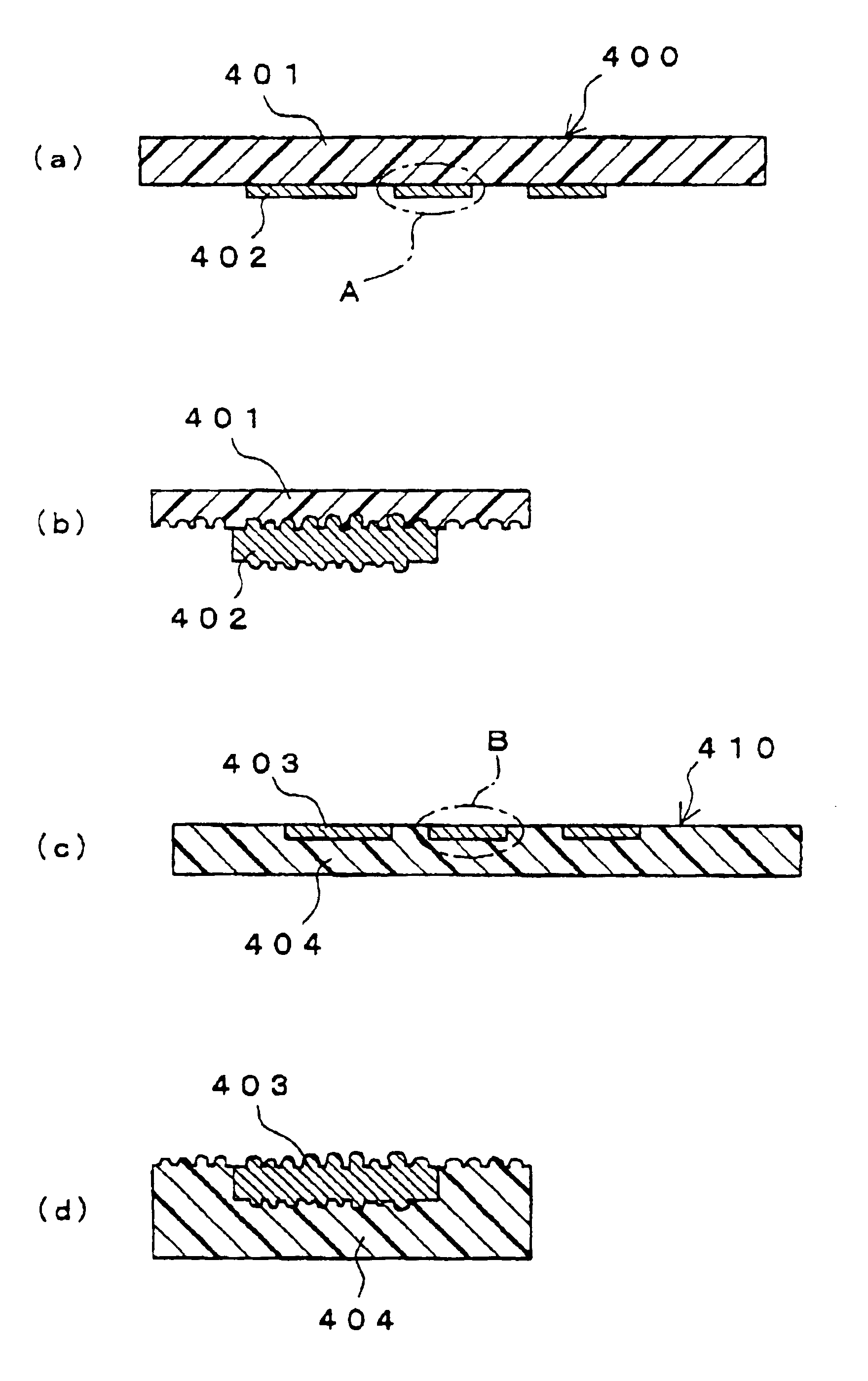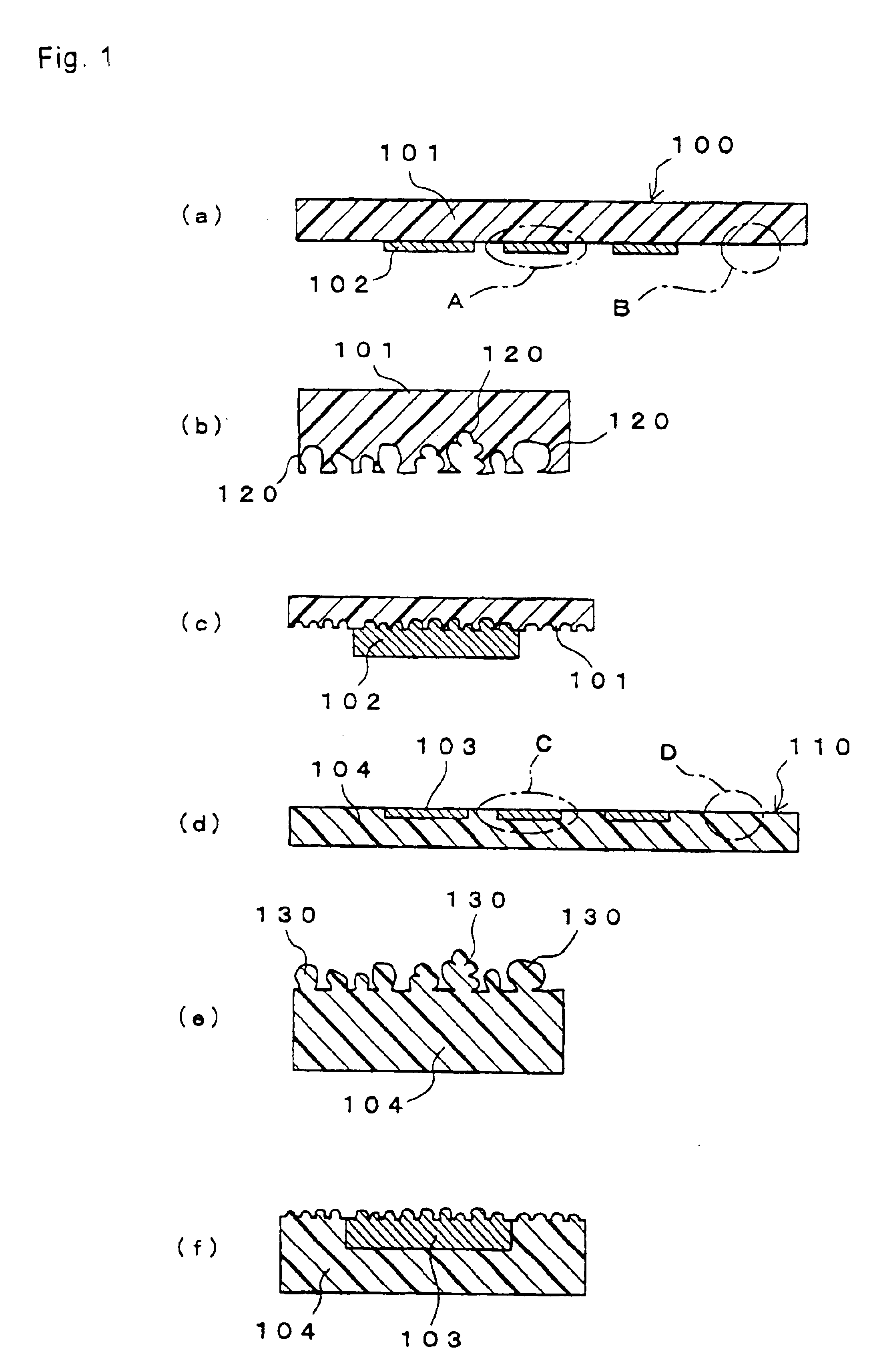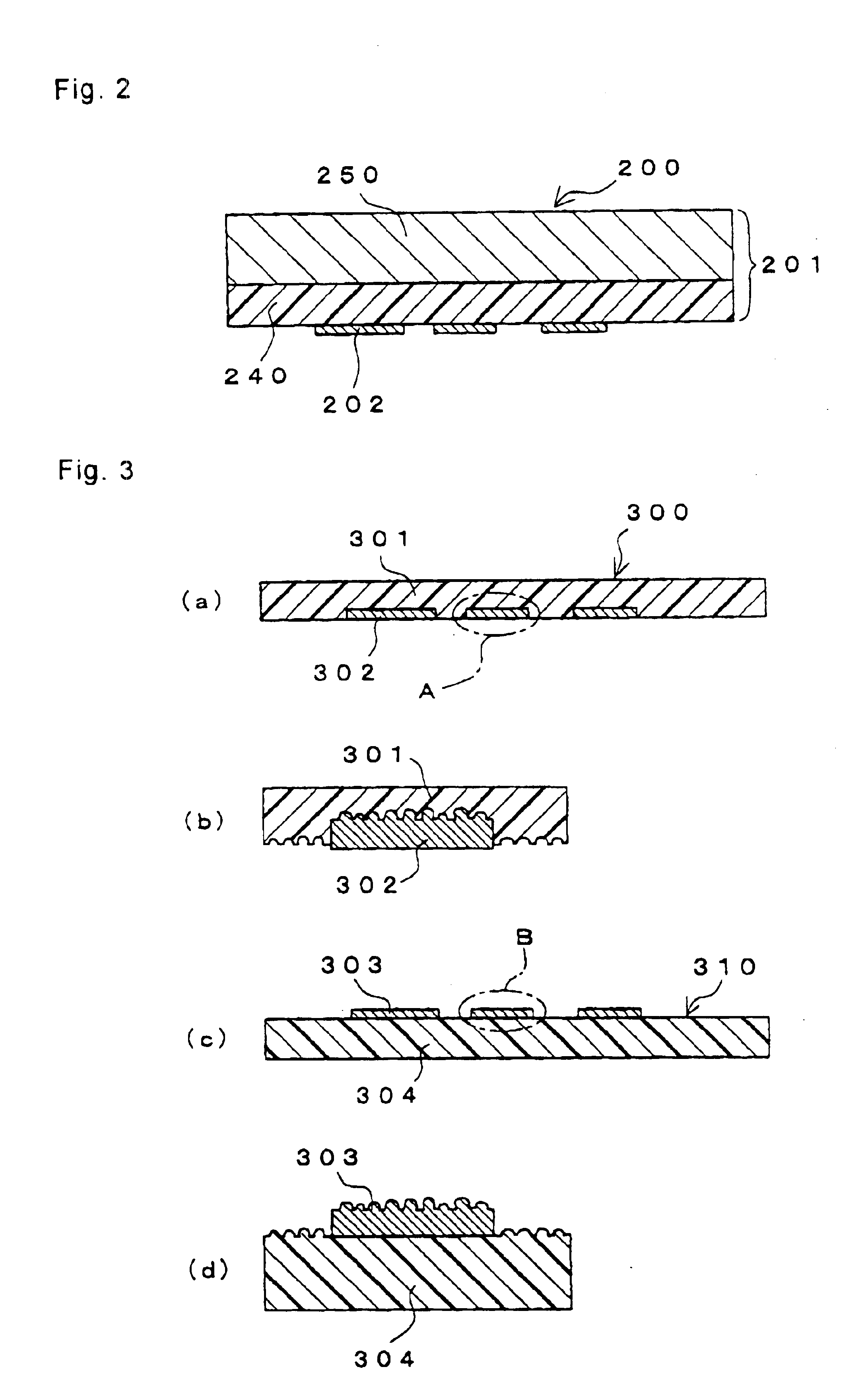Wiring transfer sheet and method for producing the same, and wiring board and method for producing the same
a technology of wiring transfer sheet and transfer sheet, which is applied in the direction of printing element electric connection formation, insulating substrate metal adhesion improvement, and semiconductor/solid-state device details, etc. it can solve the disadvantages of laminated wiring board to a substance (e.g. a resin) which is laminated on its surface disadvantageously, and achieves high-density mounting and improve adhesion.
- Summary
- Abstract
- Description
- Claims
- Application Information
AI Technical Summary
Benefits of technology
Problems solved by technology
Method used
Image
Examples
embodiment 1
(Embodiment 1)
[0112]In FIG. 1, a wiring transfer sheet of Embodiment1 of the present invention and a wiring board which is produced using the wiring transfer sheet are schematically shown in sectional views. FIG. 1(a) shows a wiring transfer sheet 100 wherein a wiring layer 102 is formed in a predetermined pattern on a surface of a carrier base 101. FIG. 1(b) shows an enlarged view of Area B which is an exposed area of a surface of the carrier base is on which the wiring layer is formed. FIG. 1(c) shows an enlarged view of Area A in the vicinity of a the wiring layer of the wiring transfer sheet. FIG. 1(d) shows a wiring board 110 which is obtained by transferring a wiring layer 103 to an electrically insulating substrate 104 by using the wiring transfer sheet shown in FIG. 1(a). FIG. 1(e) shows an enlarged view of an Area D that is an exposed surface of the electrically insulating substrate, which is a part of a surface of the wiring board which surface has the wiring layer. FIG. 1...
embodiment 2
(Embodiment 2)
[0117]In FIG. 2, a wiring transfer sheet of Embodiment 2 of the present invention is schematically shown in sectional view. In a wiring transfer sheet 200 shown in FIG. 2, a carrier base 201 is formed of a wiring-forming layer 240 and a supporting layer 250, and a wiring layer 202 is formed on a surface of the wiring forming layer 240. In this wiring transfer sheet 200, the concavities (not shown) are formed on an exposed surface of the wiring-forming layer. The materials suitable for constituting the wiring-forming layer 240 and the supporting layer 250 are as described above. More specifically, as a combination of supporting layer / wiring forming layer, a copper foil / a fluorine-containing resin is exemplified.
embodiment 3
(Embodiment 3)
[0118]In FIG. 3, a wiring transfer sheet of Embodiment 3 of the present invention and a wiring board which is produced using the wiring transfer sheet are schematically shown in sectional views. FIG. 3(a) shows a wiring transfer sheet 300 wherein a wiring layer 302 is buried in a carrier base 301. FIG. 3(b) shows an enlarged view of Area A in the vicinity of the wiring layer of the wiring transfer sheet. FIG. 3(c) shows a wiring board 310 which is obtained by transferring a wiring layer 303 to an electrically insulating substrate 304 using the wiring transfer sheet shown in FIG. 3(a). FIG. 3(d) shows an enlarged view of Area B in the vicinity of the wiring layer of the wiring board.
[0119]As shown in FIG. 3(b), almost the entire thickness of the wiring layer 302 is buried in the carrier base 301 so that a surface of the wiring layer 302 is substantially flush with a surface of the carrier base 301. Such a wiring transfer sheet is produced by forming the wiring layer in ...
PUM
| Property | Measurement | Unit |
|---|---|---|
| diameter | aaaaa | aaaaa |
| height | aaaaa | aaaaa |
| diameter | aaaaa | aaaaa |
Abstract
Description
Claims
Application Information
 Login to View More
Login to View More - R&D
- Intellectual Property
- Life Sciences
- Materials
- Tech Scout
- Unparalleled Data Quality
- Higher Quality Content
- 60% Fewer Hallucinations
Browse by: Latest US Patents, China's latest patents, Technical Efficacy Thesaurus, Application Domain, Technology Topic, Popular Technical Reports.
© 2025 PatSnap. All rights reserved.Legal|Privacy policy|Modern Slavery Act Transparency Statement|Sitemap|About US| Contact US: help@patsnap.com



